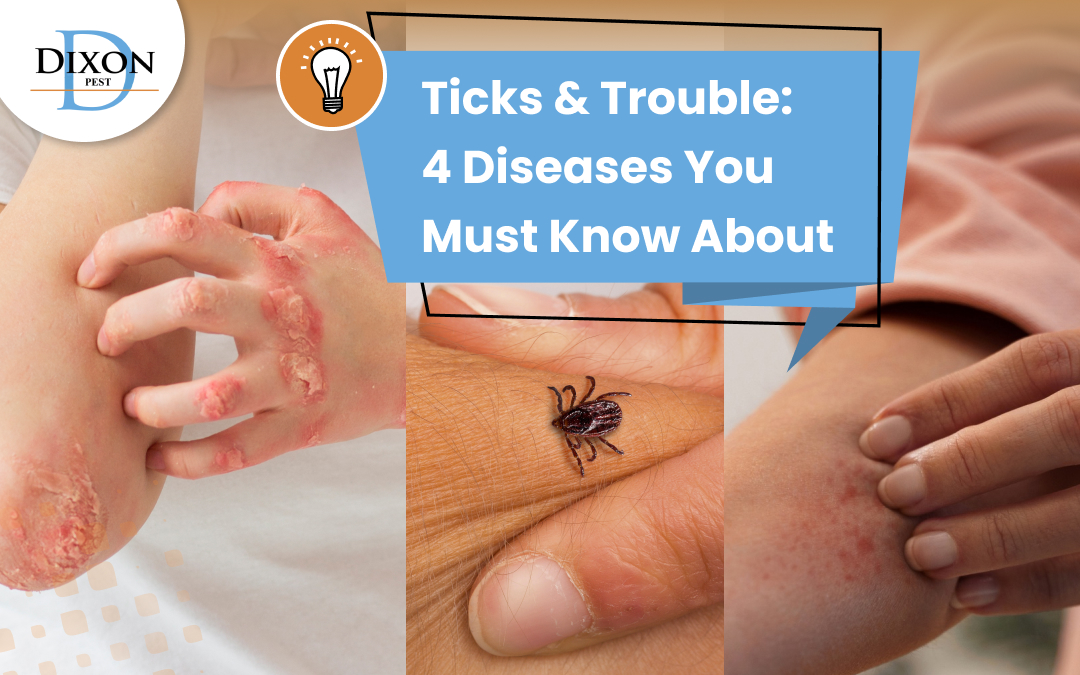Ticks are more than just a nuisance; they are carriers of dangerous diseases that can seriously impact human and animal health. These tiny parasites latch onto their hosts and feed on blood, potentially transmitting harmful pathogens in the process. As tick populations rise due to climate changes and habitat expansion, it’s more important than ever to be aware of the risks they pose. Here are four tick-borne diseases you should know about:
Lyme Disease
One of the most well-known tick-borne illnesses, Lyme disease is caused by the bacterium Borrelia burgdorferi, transmitted through the bite of an infected black-legged tick (deer tick). Symptoms can include fever, fatigue, joint pain, and a characteristic bull’s-eye rash. If left untreated, Lyme disease can lead to severe complications, including neurological and heart issues. Early diagnosis and antibiotic treatment are crucial in managing this disease.
Rocky Mountain Spotted Fever (RMSF)
RMSF is a serious bacterial infection caused by Rickettsia rickettsii, transmitted by the American dog tick, Rocky Mountain wood tick, and brown dog tick. Symptoms include high fever, headache, nausea, and a distinctive spotted rash that appears a few days after infection. Without prompt treatment, RMSF can lead to organ failure and even death. Immediate medical attention and antibiotic treatment are essential.
Ehrlichiosis
Ehrlichiosis is caused by different species of Ehrlichia bacteria and is primarily spread through the bites of the lone star tick. Common symptoms include fever, chills, muscle aches, nausea, and confusion. In severe cases, it can result in respiratory failure, kidney failure, and bleeding disorders. Since ehrlichiosis symptoms can mimic other illnesses, early detection and treatment with antibiotics are crucial for recovery.
Anaplasmosis
Anaplasmosis, similar to ehrlichiosis, is caused by Anaplasma phagocytophilum and transmitted by black-legged ticks. Symptoms typically appear within a week of infection and include fever, headache, muscle pain, and chills. Severe cases can lead to respiratory failure, organ damage, and neurological complications. Early diagnosis and antibiotic treatment can help prevent serious health issues.
How to Protect Yourself from Tick-Borne Diseases
To reduce the risk of tick bites and the diseases they spread, follow these preventive measures:
- Wear long sleeves, pants, and light-colored clothing when venturing into wooded or grassy areas.
- Use insect repellents containing DEET, picaridin, or permethrin.
- Conduct thorough tick checks after outdoor activities, paying close attention to hidden areas like behind the ears, underarms, and the groin.
- Keep yards well-maintained by trimming grass and removing leaf litter.
- Shower after being outdoors to help wash off unattached ticks.
Final Thoughts
Ticks and the diseases they carry are a growing concern, but with proper awareness and preventive measures, you can protect yourself and your loved ones. If you suspect a tick bite and experience any unusual symptoms, seek medical attention promptly. Stay vigilant, stay informed, and stay safe!
For professional pest control services and effective tick prevention, contact Dixon Pest Solution today!

